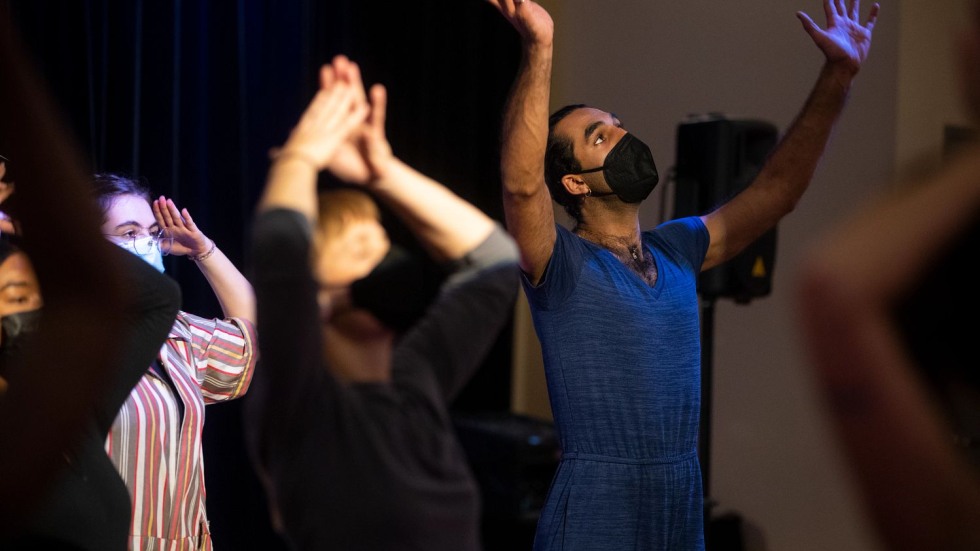PROVIDENCE, R.I. [Brown University] — Jada Wooten, a Brown University junior, aspires to use dance to unite people from disparate backgrounds and to address pressing social issues, such as inequality and climate change.
So it’s no surprise that Wooten jumped at the chance to perform on stage with Bill T. Jones, a revered choreographer known for confronting thorny issues such as racism and the AIDS epidemic in his work — and who has long invited community members across the United States to join him on stage.
Following an application process, Wooten and two dozen other Providence-area residents took part in a performance of Jones’ project “What Problem?” on Friday, Nov. 4, at the Veterans Memorial Auditorium. The University’s Brown Arts Institute joined forces with longtime partner FirstWorks, a nonprofit dedicated to bringing engaging new art to Rhode Island, to invite Jones and his company to Providence for a week packed with public conversations on the connections between dance, community, the COVID-19 pandemic and the midterm elections; workshops with local high school students; a master class with Brown students; and, yes, a performance.
“My fond memories of watching Bill T. Jones’ choreography were in the back of my mind as I applied for the opportunity to dance alongside him,” Wooten said. “In the front of my mind were my students in Beginning Modern Dance, where I’m a teaching assistant. A focus of the course is getting students to watch and critique performances, and one of them is ‘What Problem?’ I figured I could enhance my students’ experience with the performance if I had a role in it and could share my performance stories with them.”
Jones’ “What Problem?” evokes the tension between belonging to a community and feeling isolated in divisive political times. The piece features singing, evocative movement and readings from “Moby Dick,” the Constitution and the “I Have a Dream” speech by the Rev. Martin Luther King Jr. The piece’s ruminations on isolation took on new meaning when, one month before its intended premiere, COVID-19 spread across the U.S., bringing in-person gatherings and performances to a halt. “What Problem?” is a tourable, smaller scale adaptation of the epic work “Deep Blue Sea,” commissioned by New York’s Park Avenue Armory and premiered there in 2021 with 89 local performers, in addition to Bill T. Jones/Arnie Zane Company members.


